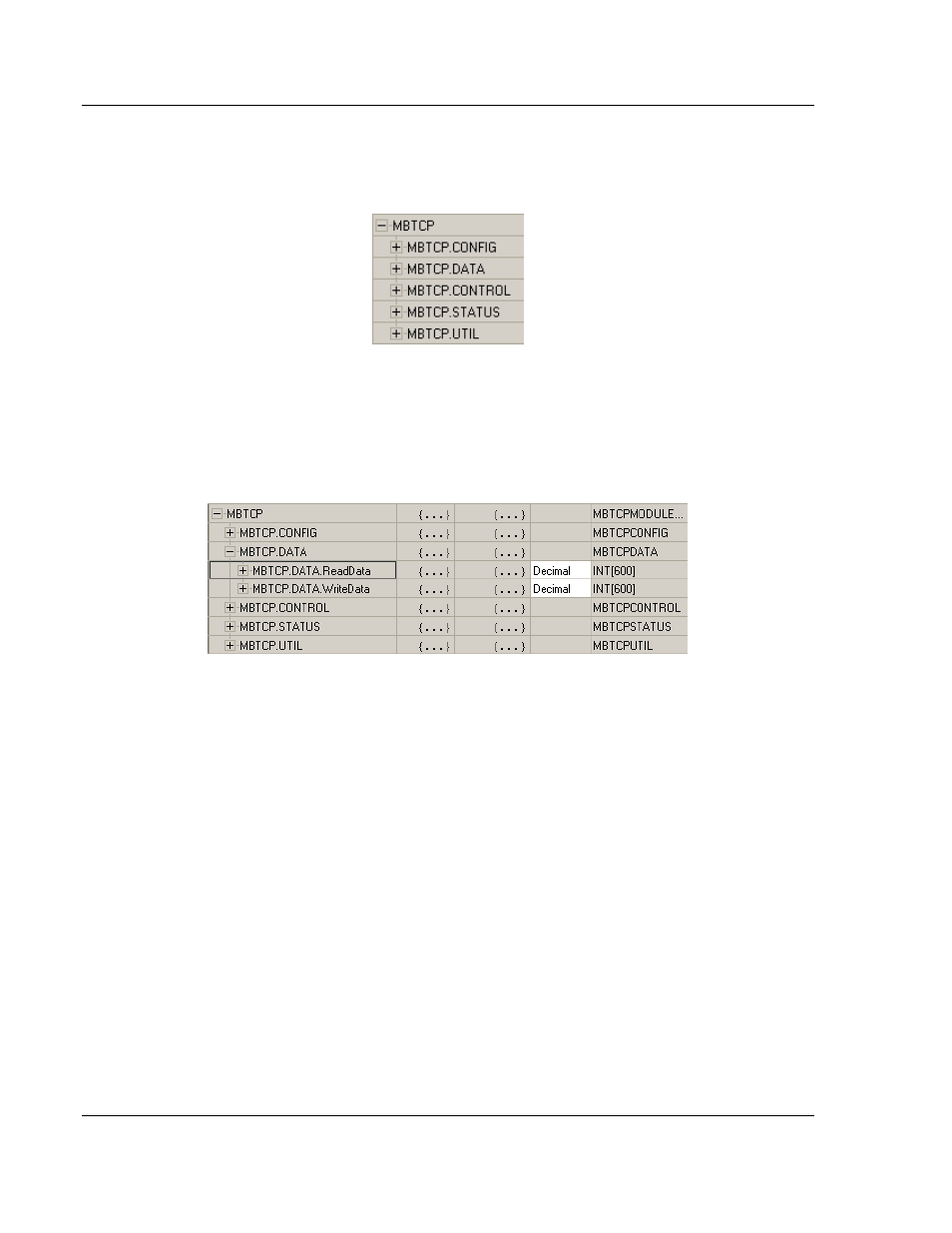User-defined data types (udts) – ProSoft Technology MVI69E-MBTCP User Manual
Page 76

Using Controller Tags
MVI69E-MBTCP ♦ CompactLogix Platform
User Manual
Modbus TCP/IP Enhanced Communication Module
Page 76 of 150
ProSoft Technology, Inc.
May 20, 2015
5.1.1 MVI69E-MBTCP Controller Tags
The main controller tag structure, MBTCP, is broken down into five lower-level
controller tag structures.
The five lower-level controller tag structures contain other controller tags and
controller tag structures. Click the [+] sign next to any controller tag structure to
expand it and view the next level in the structure.
For example, if you expand the MBTCP.DATA controller tag structure, you see
that it contains two controller tag arrays, MBTCP.DATA.ReadData and
MBTCP.DATA.WriteData, which are 600-element integer arrays by default.
The controller tags in the Add-On Instruction are commented in the D
ESCRIPTION
column.
Notice that the D
ATA
T
YPE
column displays the data types used to declare each
controller tag, controller tag array or controller tag structure. Individual controller
tags are declared with basic data types, such as INT and BOOL. Controller tag
arrays are declared with arrays of basic data types. Controller tag structures are
declared with user-defined data types (UDTs).
5.2
User-Defined Data Types (UDTs)
User-defined data types (UDTs) allow you to organize collections of data types
into groupings. You can use these groupings, or data type structures, to declare
the data types for controller tag structures. Another advantage of defining a UDT
is that you may reuse it in other controller tag structures that use the same data
types.
The Add-On Instruction Import Rung ladder logic for the module has pre-defined
UDTs. You can find them in the User-Defined subfolder, located in the Data
Types folder in the Controller Organizer pane of the main RSLogix window. Like
the controller tags, the UDTs are organized in a multiple-level tree structure.